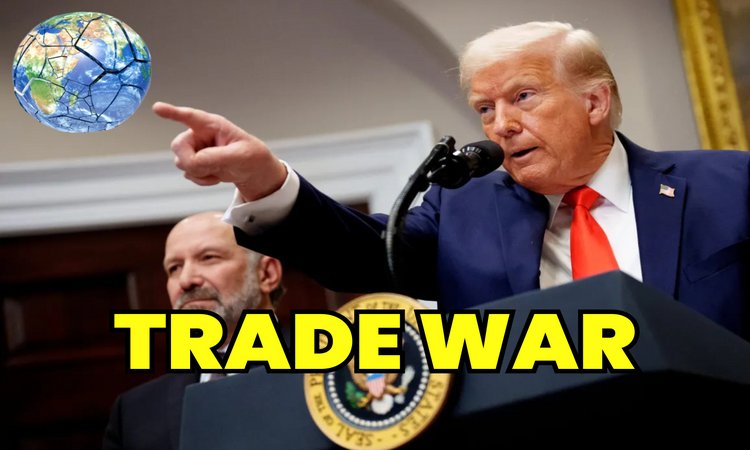At the end of financial year 2022, the price-to-book (P/B) ratio for the European consumer products giant Unilever PLC stood at six. The same number for its subsidiary in India, Hindustan Unilever, was twice that, at twelve. This difference is not because the Indian subsidiary is a young or small company — on the contrary, the Indian subsidiary is a 90-year-old company with a market cap of $76 billion. Nor is this an isolated instance.
Nestle SA, the world’s largest food and beverage company giant based out of Switzerland, has a P/B ratio of six, while its subsidiary in India has a whopping 82; 3M USA has a P/B of 4.2, its Indian subsidiary has a P/B of 12.7; the German parent of BASF, a global leader in speciality chemicals, has a P/B ratio of just one, its Indian subsidiary has four; the German parent of Siemens, a heavy industry leader, has a P/B ratio of two, its Indian subsidiary has ten. These differences are so vast that in some cases the Indian subsidiary may be valued more than the parent on a standalone basis.
Why is there such a chasm in P/Bs of parent companies and their Indian subsidiaries? Because Indian firms have better growth prospects, higher profitability, and more efficient asset utilization, all the while when the parent languishes in its home market. That’s why every multinational must have an India strategy, or else it will miss out on one of the most promising market opportunities in the world today.
P/B ratio represents how a company’s assets are priced by the markets. It is higher for companies with better growth prospects (measured by revenue growth), more profitable operations (measured by profits to sales ratio), more efficient utilization of assets (measured by sales to assets ratio), and lower cost of capital. Lower cost of capital could not be the reason for higher P/B ratios for Indian subsidiaries. A company’s cost of capital is limited by its country’s sovereign rating. India’s credit rating at BBB- is much inferior to the AAA rating of USA, Germany, and Switzerland. So, it is unlikely that all else held equal, an Indian subsidiary has a lower cost of capital than its parent located in a G7 country. Therefore, its higher P/B ratio must be related to better profitability and/or growth prospects.
Over the last five years, the Compounded Annual Growth Rate (CAGR) in revenues for Unilever India was 9.6%, which is four times faster than that of 2.2% of Unilever parent. Note that parent’s growth rate includes that of the Indian subsidiary, without which, its growth rate would be even lower. Turning to profitability, return on assets for the Indian subsidiary is 11% against 8% of the parent. What is surprising is that the higher profit margin for the Indian subsidiary, of 17%, against 13% of the parent. It is surprising because Unilever’s products are priced cheaper in the India market, because of lower purchasing power of its target segment. Higher profits could be due to higher market concentration and pricing power, but that seems unlikely because of fierce competition from several sources including other multinationals such as Colgate, innovative local competitors like Patanjali Ayurved, and the availability of numerous cheaper alternatives addressing the same market, including from the informal sector. The higher margin is therefore most likely because the cost of production and distribution is lower in India, which is indeed the case.
The same story plays out for other multinationals. Nestle India earned a profit margin of 14.2% as against that of its parent of 9.8% and did so while generating sales-to-assets ratio of 196% as against just 69% for its parent. Siemens India had a profit margin of 10.6% against 4.8% for its parent, and a sales-to-assets ratio of 91% as against 51% for its parent.
These numbers show that almost on all fronts — that is, market growth, asset utilization, and profitability — the Indian market offers more attractive prospects than the home market for the multinational.
The Growing Indian Market
India enjoys a fast-growing segment of urban middle class for consumer products. The World Economic Forum summarizes it well: “In terms of sheer numbers, the largest urban transformation of the 21st century is … happening in India.” The share of middle class in India increased from 14% in 2005 to 31% in 2021, and is expected to further increase to 63% by 2047. Similar estimates come from Frost & Sullivan, which estimates that the share of people in India who are poor will continue to dwindle, and while the middle class grows, doubling its percentage from 28.5% in 2019 to 53.8% in 2030. Middle class is defined as Indian households earning between $6,700 to $40,000, measured in 2020 US Dollars, which adjusted for purchasing power parity, equates to $22,700 to $136,000 in the US. Even a small change in the percentage change of middle class means a lot because of the India’s large population base. At 1.43 billion, it is now the most populous country in the world and is about twice the size of US and EU populations put together. (The populations of US and EU are 334 million and 447 million, respectively.) Roughly 25 percentage point change, from 28.5% to 53.8%, even at the current population base, means 350 million people, which is more than the US’s population.
The increase in urban middle class in India is a combination of three factors: rapid urbanization of smaller towns, the movement of people from rural to urban areas in search of better employment opportunities, and a progression of people from subsistence income levels to those with substantial disposable income and aspirational lifestyle. Small cities with population between 1.0 and 2.5 million are growing at astronomical rates, touching 10% per year. Sixteen towns have been labelled as boomtowns given their rapid increase of the young population. Within those cities, the share of middle class is expanding, turbo charging the growth rates of the urban middle class. Super metros such as Mumbai, Delhi, and Bangalore, with populations exceeding 10 million each, are contributing to growth in another way. They are showing almost 10% annual increase in the population of super rich, those who can afford fancy cars, luxury homes, and vacations in international hotspots. No multinational can afford to overlook this urban growth.
It would be good to compare India’s numbers with other countries. A report by Brookings projected that 1.06 billion people around the world entered middle class from 2015 to 2022. India’s contribution was estimated at 380 million, or about one third of the total, surpassing even China’s contribution of 350 million people. No other country reaches even half of these numbers. Interesting, in 2030, the total consumption of US middle class is expected to be $4.7 trillion in purchasing power parity terms (in 2011 dollars), about the same as in 2015. The most astounding and consequential global growth in consumption of middle class will come from India, from $2.1 trillion in 2015 (less than half of US) to $10.7 trillion in 2030 (more than twice that of US), both in 2011 dollars. China is expected to become the world’s largest middle class, with a consumption of $14.3 trillion. Another growth center will be Indonesia, which is expected to become the fourth largest middle-class consumption center after China, India, and US. But at $2.4 trillion, it would be about one-fourth the size of India’s.
These data are also consistent with data on national aggregate growth rates. Goldman Sachs calculated India’s real GDP growth rate during 2010-2019 at 6.9%, second fastest among all major economies in the world, and more than three times as fast as that of developed countries. During the decade of 2020-2029, India’s growth rate is expected to be the highest in the world, followed by China, Philippines, Turkey, and Egypt. No developed country would come even half as close as India in terms of growth rate. By 2050, India’s real GDP will cross the consolidated GDP of the EU in raw numbers. Adjusted for purchasing power parity, India’s GDP would easily be three times that of EU. By 2075, China, India, and USA are expected to be the largest economies in the world, in that order. No other countries would be close to that number, though Indonesia, Nigeria, Pakistan, and Egypt could join the top 10, with each of them being less than a third of each of the top three.
Lessons for Multinationals
In light of the data on India’s overall growth and growing middle class, it’s not a surprise that multinationals’ subsidiaries are highly valued for their own growth opportunities. Every multinational now needs an India strategy to benefit from its fast-growing urban middle class. They will succeed provided they follow three recommendations:
- Make significant resource commitments to India. This requires localizing product design, manufacturing, and marketing capabilities.
- Customize products and services by understanding the culture, values, norms, usage habits, extreme heat and paucity of air conditioning, plethora of languages, and multiplicity of local laws. Notably, despite being a single country, India means a multitude of cultures and languages. There are more than 780 languages written in 66 different scripts, of which 22 languages are considered “official,” each with its own script.
- Leverage the “India Stack,” the world’s largest unified software and digital infrastructure platform, that aims to bring India’s population into the digital age of presence-less, paperless, and cashless service delivery. Its scale can be judged from the fact that from 2010, when almost no person had a unique identity like social security number in the US, now, over 1.2 billion people in India have unique digital identities, linked to their bank accounts, through biometrics. A custom-developed unified payment interface now widely used in India, implies that almost everyone now uses a smart phone, to pay from, and receive money to, a digitally connected bank account. This growing e-commerce infrastructure and capabilities are facilitated by almost every middle-class person carrying a smart phone, connected on internet with world’s cheapest bandwidth. The logistics, payment, and distribution systems created using digital technology in India, is now miles ahead of that in the West, and is now the envy of the world.
In summary, the high P/B ratios of multinationals’ subsidiaries in India demonstrate the value of what will soon be the world’s largest consumer market. Every B2C company must take notice and must have an India strategy. The strategy must entail a suitable plan to enter the market, while doing so with high profitability and efficient utilization of capital. Importantly, it means going back to the drawing board, creating products made for Indian markets, producing them in India, using India-sourced raw materials, and distributing them using local channels and digitally enabled infrastructure. A wholesale copying of what worked in a developed country and applying it to India is unlikely to work.
Editor’s Note 9/26/23: This article has been updated to reflect that the increase in India’s middle class could involve more people than the entire population of the United States.




